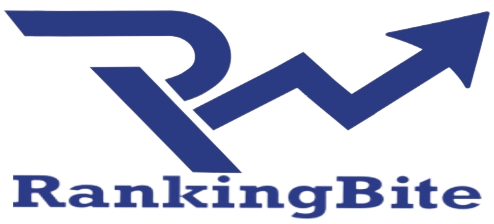
Link building is one of the cornerstones of search engine optimization (SEO), influencing rankings, traffic, and online authority. However, not all link-building methods are created equal. Techniques are broadly classified into white hat and black hat strategies, based on their adherence to search engine guidelines.
In this article, we’ll explore the key differences between white hat and black hat link-building techniques, their benefits and risks, and how to choose the right approach for your SEO strategy.
Key Takeaways:
- White hat link building ensures sustainable SEO growth through ethical, guideline-compliant practices like content marketing and guest blogging.
- Black hat techniques, such as buying links and PBNs, offer quick results but carry high risks of penalties and deindexing.
- White hat methods prioritize quality and relevance, while black hat strategies rely on manipulative, low-quality links.
- Case studies show white hat strategies lead to long-term success, while black hat tactics often result in penalties and ranking losses.
- Adopting white hat techniques protects your site’s credibility, rankings, and SEO investments in 2025.
What Is White Hat Link Building?
White hat link building refers to ethical and legitimate techniques that comply with search engine guidelines. These strategies focus on creating high-quality content and building genuine relationships with other websites to earn backlinks naturally.
Characteristics of White Hat Techniques:
- Follow Search Engine Guidelines: These methods align with Google’s Webmaster Guidelines.
- Focus on Quality: Prioritize earning links from authoritative and relevant websites.
- Sustainable Growth: Build a strong foundation for long-term SEO success.
What Is Black Hat Link Building?
Black hat link building involves manipulative practices to trick search engines into ranking a website higher. These techniques often violate search engine rules, carry significant risks, and can lead to penalties.
Characteristics of Black Hat Techniques:
- Manipulative Methods: Use unethical tactics to gain quick results.
- Low-Quality Links: Generate links from irrelevant or spammy sources.
- High Risk: Risk penalties or even deindexing by search engines.
Key Differences Between White Hat and Black Hat Techniques
| Aspect | White Hat Techniques | Black Hat Techniques |
|---|---|---|
| Compliance with Guidelines | Follow Google’s Webmaster Guidelines. | Violate search engine rules. |
| Link Quality | Earn high-quality, relevant links. | Use low-quality, spammy links. |
| Risk Level | Safe and sustainable. | High risk of penalties or deindexing. |
| Time to See Results | Long-term but steady growth. | Quick results with unsustainable outcomes. |
| Cost | Often requires investment in content and outreach. | May include paid or automated methods. |
White Hat Link-Building Techniques
White hat strategies prioritize quality over quantity and focus on earning backlinks naturally. Below are some effective white hat methods:
1. Guest Blogging
- Write valuable articles for authoritative websites in your niche.
- Include a natural backlink to your website.
- Builds credibility and referral traffic.
2. Content Marketing
- Create high-quality content, such as blog posts, guides, and infographics.
- Promote your content to earn organic backlinks.
- Attracts links from reputable websites.
3. Broken Link Building
- Identify broken links on high-authority websites.
- Offer your content as a replacement for the dead link.
- Helps both the site owner and your SEO.
4. Building Relationships
- Network with bloggers, influencers, and website owners.
- Leverage relationships to earn natural backlinks.
- Adds credibility and creates long-term partnerships.
5. Resource Page Outreach
- Find resource pages relevant to your niche.
- Pitch your content or tool as a valuable addition to their list.
- Earn links from curated, high-quality pages.
Black Hat Link-Building Techniques
Black hat strategies exploit loopholes in search engine algorithms to gain backlinks quickly. These tactics often result in penalties and long-term damage to a site’s reputation.
1. Buying Links
- Paying for backlinks violates Google’s guidelines.
- Often involves links from low-quality or irrelevant sites.
- Risks significant penalties.
2. Private Blog Networks (PBNs)
- Use of a network of interlinked websites to manipulate rankings.
- Google actively penalizes sites using PBNs.
- High cost and risk of deindexing.
3. Comment Spam
- Adding irrelevant links in blog comment sections.
- Does not provide significant SEO value.
- Creates a spammy link profile.
4. Automated Link Building
- Use of tools to generate bulk backlinks.
- Results in low-quality and irrelevant links.
- Easy for search engines to detect and penalize.
5. Cloaked Backlinks
- Hiding links within content using deceptive techniques.
- Misleads search engines and users.
- Carries severe penalties.
Risks of Black Hat Link Building
Using black hat techniques can result in significant consequences for your website, including:
- Google Penalties: Algorithms like Penguin can devalue or penalize sites using manipulative tactics.
- Loss of Rankings: A penalized website loses its ranking position, leading to reduced visibility and traffic.
- Damaged Reputation: Spammy link profiles can harm your brand’s trustworthiness.
- Deindexing: In severe cases, your site can be removed from search engine indexes.
Case Studies: White Hat vs Black Hat Link Building
Case Study 1: White Hat Success
A digital marketing agency focused on creating long-form, informative guides and promoting them through guest blogging. Results:
- Earned 50+ high-authority backlinks from sites with DA over 70.
- Increased organic traffic by 85% in six months.
- Rankings improved for multiple competitive keywords.
Case Study 2: Black Hat Failure
An e-commerce site purchased backlinks from a network of unrelated websites. Results:
- Rankings initially spiked but dropped drastically within three months.
- The site received a manual penalty from Google.
- Recovery took over a year and required significant disavow efforts.
Choosing the Right Approach for 2025
Why White Hat Techniques Are Better:
- Sustainability: Build long-term success without risking penalties.
- Credibility: Enhance your brand’s reputation and trustworthiness.
- Compliance: Align with search engine algorithms and guidelines.
Why Avoid Black Hat Techniques:
- Short-Term Gains: Results are unsustainable and often temporary.
- High Risk: Penalties can lead to lasting damage to your site’s performance.
- Poor ROI: Recovery from penalties is costly and time-consuming.
How to Transition from Black Hat to White Hat Techniques
If you’ve used black hat tactics in the past, transitioning to white hat methods is crucial for long-term success. Here’s how:
- Audit Your Backlink Profile: Use tools like Ahrefs or Google Search Console to identify and disavow toxic links.
- Focus on Quality Content: Invest in creating valuable, shareable content that earns organic links.
- Build Genuine Relationships: Reach out to authoritative sites for guest blogging or resource mentions.
- Adopt Ethical Practices: Follow Google’s guidelines for transparent and sustainable link building.
My Thoughts: White Hat vs Black Hat Link Building
White hat link building is the clear winner. While black hat techniques may offer quick results, they carry significant risks and are not sustainable. White hat strategies, though slower, provide lasting benefits by enhancing your site’s authority, credibility, and rankings.
My Link Building Tips:
- Prioritize quality, relevance, and natural link-building methods.
- Avoid manipulative practices that violate search engine guidelines.
- Focus on building a diverse and ethical backlink profile for long-term SEO success.
By choosing white hat techniques, you can ensure that your link-building efforts contribute to a robust and sustainable SEO strategy in 2025 and beyond.





